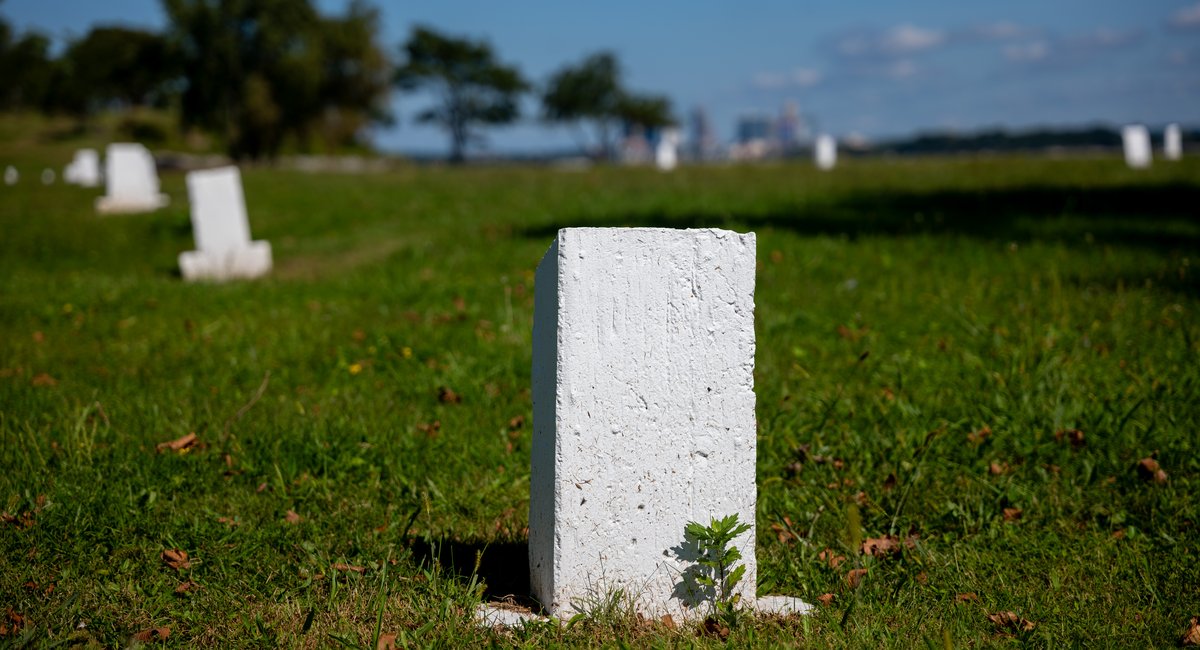New Yorkers with loved ones buried at the city’s public cemetery on Hart Island say they want their gravesites protected and a voice in the process as officials look to increase access to the long-isolated Bronx isle.
Lawmakers and members of the public discussed the future of the mile-long island, which has served as the city’s final resting place for poor and unclaimed residents for over a century, at a City Council hearing Thursday. Families testified that decisions about Hart Island remain opaque even as the city embarks on an ambitious 20-year overhaul and conditions have improved since the parks department took over the island’s management from jail officials in 2021.
Relatives urged councilmembers to preserve the dignity of those buried at the cemetery, allow more frequent gravesite visits and establish a formal advisory group of families whose loved ones rest there. The hearing came as the Council weighs a bill to study burial practices at Hart Island, which already houses the remains of more than 1 million New Yorkers.
“Many of us were not in this room when decisions about Hart Island were made,” said Elsie Soto, whose father and brother rest in the cemetery. “But we are here today.”
Soto was a few seconds into her testimony when her voice cracked. Councilmembers encouraged her to keep going, so she cleared her throat and began again.
“ My father, Norberto Soto, passed away from HIV/AIDS complications in 1993, and more recently, in 2023, my brother Morgan Soto passed from fentanyl poisoning,” she said. “Both rest on Hart Island. I live with those losses every day.”
Councilmember Diana Ayala’s bill would direct the city’s social services and parks departments to map trench locations and depth, estimate remaining burial capacity and recommend changes. The measure also asks whether the park officials’ plans could complicate future burials.
Hart Island largely stayed out of the public eye for decades. But in recent years, families of those buried on the island began pushing for the right to visit and urged the city to better care for the space, leading to the parks department’s takeover of the island.
Parks employees on Thursday described their efforts to open up the island through gravesite visits and public tours. More than 3,300 people have visited Hart Island since the handoff from the city Department of Correction four years ago, officials said.
They also spoke about a concept plan to remake the island by adding a welcome center, seating and walking paths to connect new lawns and gardens. Sarah Neilson, a director at the parks department, said the plan is an effort “ to preserve and enhance Hart Island as [a] contemplative, quiet and spiritual place.”
While Soto and other family advocates acknowledged those gains — recalling years when armed correction officers escorted them to gravesites — they argued the city could still do more to include families in the island’s stewardship.
Soto said she was shown to a different location for her father’s grave on two different trips just months apart.
“Where do I put my flowers? Where do I put the sand from when I visit Puerto Rico?” she asked, explaining how she brought a piece of her father’s homeland whenever she visited his grave. “I can’t bring him to Puerto Rico, but I can bring it to him.”
Elaine Joseph, whose infant daughter was buried on Hart Island in 1978, said she felt that the public tours allowed for more time on the island than the gravesite visits. She also pressed the Council to consider easier transportation to the island than the current ferry that leaves from nearby City Island in the Bronx.
“I often sit along the waterway park on the Queens side of the Throgs Neck Bridge and look over at Hart Island and wish there was a simple ferry I can board during the week to go and visit the grave of my baby girl,” she said.
Councilmember Erik Bottcher pressed park officials on how they have been including families in the planning for Hart Island, saying “they should have the biggest voice of anyone.” Officials described various points of contact but acknowledged there is no formal family advisory body of the sort Soto is pushing for.
The question of how to make more room for the dead also loomed over the hearing. A 2022 study warned the island could reach capacity within the decade unless the city added new plots and adjusted burial practices. Currently, bodies are placed in spare, pine boxes and buried together in trench graves.
Matthew Brune, chief operating officer at the city’s Human Resources Administration, offered a different estimate Thursday. Assuming the parks department pushes forward with its plans, he said, “there is currently about 18 years of remaining capacity.”
Melinda Hunt, founding director of the Hart Island Project, an advocacy group that maps the island’s graves, urged councilmembers to pass Ayala’s bill and mandate a comprehensive study. She said the report from 2022 didn’t account for the impact of rising sea levels and water tables, which could cause the island’s surface to “heave and rupture.”
“Shoreline restoration can keep water off the surface, but it won’t keep water out of boxes buried 8 feet deep,” she said.
Families of loved ones buried on the island are understandably wary of proposals to add more coffins to existing trenches, Hunt said. But she argued New York will have to build trust with those families and confront practices used elsewhere, including limited grave recycling, if Hart Island is to remain a public cemetery.
Another potential approach came up at Thursday’s hearing: offering cremation, which could help save burial space and extend Hart Island’s “useful life” by almost 200 years, according to the 2022 report. Legislation introduced in Albany would give the city and other municipalities this option in certain circumstances, but it remains pending.

